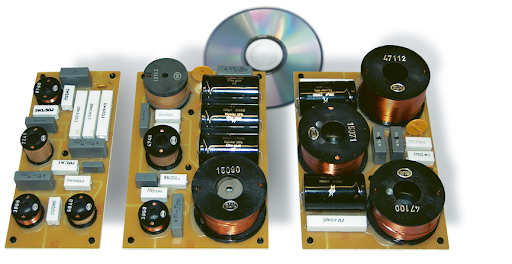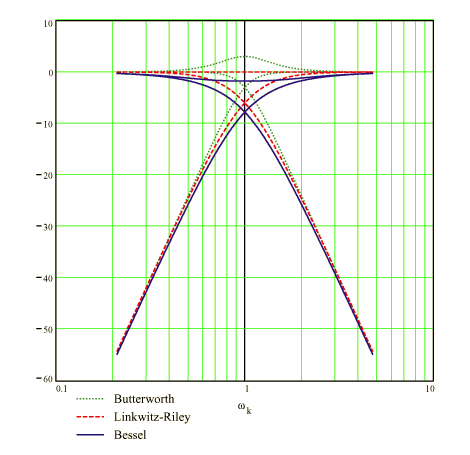Using Active Speaker Crossovers to Fine-Tune an Audio System
Crossovers are an important, but rarely talked about, part of a great-sounding audio system.
They separate different frequencies of sound and allow the speaker's drivers to play those frequencies they're best designed for (lower frequencies go to woofers, midrange frequencies go to midrange drivers, and the highest frequencies go to tweeters). Crossovers that send signals to two drivers are called two-way; they're called three-way if they feed three different drivers.
In a crossover, a low-pass filter blocks higher frequencies and allows low-frequency signals to pass through to the speaker. A high-pass crossover allows high-frequency signals while blocking lower ones.
The crossover frequencies are set according to the specifications of the speaker's drivers, usually determined by their frequency response.
The traditional way of (literally) building crossovers into a system is by soldering resistors, capacitors, and inductors onto a circuit board inside the speaker enclosure. These are called passive crossovers. This approach has worked for decades and is still fine for many uses. However, there are limitations. For instance, if you want to tweak how your speaker operates, you’ll need to get out your soldering gun and get to work, which could take hours and many different components to get just right. Active crossovers, on the other hand, are much easier to fine-tune and can give you great results in minutes!
 Passive crossovers
Passive crossovers
Active Crossovers Explained
An active crossover in an audio system is created using integrated circuits. This allows a greater degree of flexibility and control over the sound. The crossover frequencies can be adjusted to fine-tune the speaker performance at any time with simple software. Today's amplifiers may have digital signal processing (DSP) capabilities built into them which gives people tremendous power over how a speaker system operates. Think of it as a computer and audio mixing board built right into a speaker.
With DSP you can adjust not only the position of a crossover but the slope, as well. You’ll hear audio pros talk about Q, which is the ratio of the center frequency to bandwidth. The Q is essentially the shape of the filter being applied when examined on a graph.
DSP also makes it much easier to adjust individual speaker delay in a system. This is important if you have multiple speakers in your system and need all the sound to hit the listener in sync.
MISCO provides customers access to the GUI (graphical user interface) for their amplifiers so they can make these changes on their own. This is a valuable perk if the usage of a system may change over time, or if an audio system is used in multiple applications.
Crossover Filters Explained
Consider all the things you can do with MISCO's bi-amped, 2.2.1 channel, 175W, PCB-style amplifier with DSP built into it. Users can tweak any of the 10-bands of equalization (EQ), for each channel, and establish the low pass, high pass, and delay.
In addition, this amplifier supports Butterworth, Linkwitz-Riley, and Bessel filter types.
- A Butterworth filter is the most natural-sounding and widely used setting on an amplifier. It is used to deliver as flat a response as possible.
- Linkwitz-Riley filters are generally used in PA systems as they provide better power efficiency than Butterworth filters.
- Bessel filters offer linear phase response which can be important when using bi-amped systems with delays or other time alignment tricks.
 Butterworth vs Linkwitz-Riley vs Bessel Filters
Butterworth vs Linkwitz-Riley vs Bessel Filters

Example of MISCO 2.2.1 channel amplifier GUI:
Take A Full-System Approach
Each of these filters is named after a person who did a crazy amount of complex math to bring the world a new tool for improving audio quality. Obviously, this is beyond the scope of what most people need to understand when they’re looking to buy or build a system. However, knowing a bit about it will make you a better consumer.
When you partner with a speaker manufacturer on a project they should be able to recommend the crossovers and filters that will be best suited for your application. MISCO helps customers take a full-system approach that covers speaker drivers, the enclosure, the amps, and the DSP settings. Over the past seven decades we’ve found this approach gives customers the best results and helps them stay within their budgets.
Part of the beauty of DSP is that if your needs for your system do change in the future, it’s not hard to plug it into a computer and tweak the settings quickly to get exactly what you want.




